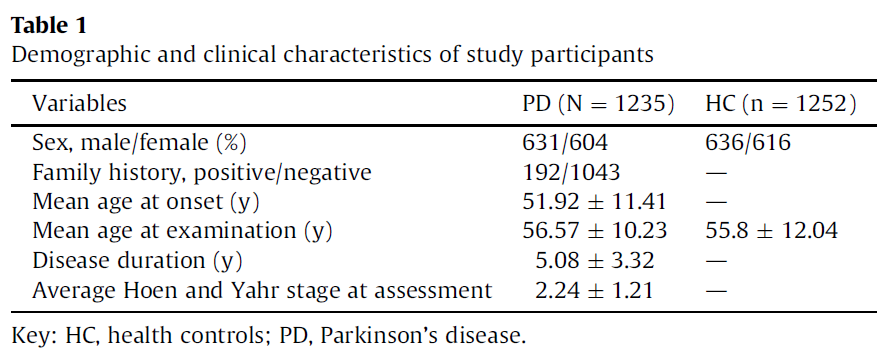Session Information
Date: Wednesday, June 7, 2017
Session Title: Parkinson's Disease: Genetics
Session Time: 1:15pm-2:45pm
Location: Exhibit Hall C
Objective: To investigate the prevalence of TMEM230 mutations in Chinese patients with familial and sporadic PD.
Background: Recently, Hanxiang Deng and colleagues identified a missense variant (c.422G>T; p.Arg141Leu) in the TMEM230 gene in a large North American family of northern European ancestry with PD through the use of linkage and a combination of whole-exome sequencing. Three other TMEM230 mutations, including c.551A>G (p.*184Trpext*5), c.275A>G (p.Tyr92Cys), and c.550_552delTAGinsCCCGGG (p.*184ProGlyext*5), were identified in other PD cases. Moreover, the mutation of p.*184ProGlyext*5 was also shown to be the most common mutation of TMEM230 in Chinese familial PD (Deng, et al., 2016). However, The association between TMEM230 mutation and PD has not been confirmed in a larger Chinese population.
Methods: We sequenced all exons and exon-intron boundaries of TMEM230 in Chinese Han population including 192 patients with a family history of PD, 1043 cases of sporadic PD and 1252 age and sex matched healthy control subjects. The polymerase chain reaction (PCR) product was sequenced with BigDye terminator v3.1 sequencing chemistry on an ABI 3730xl DNA analyzer (Applied Biosystems) and analyzed using Sequencher software.We used SPSS 20.0 software (SPSS Inc, Armonk, NY, USA) to perform all statistical analyses. The Hardy-Weinberg equilibrium for genotype frequency in PD cases and control subjects was examined, and Fisher’s exact test was used to test for association between the variants in TMEM230 gene and PD risk.
Results: Upon sequencing the boundaries of the exon–intron and entire coding regions in TMEM230 in 192 probands of PD families, 1043 cases of sporadic PD and 1252 healthy subjects, we did not detect any mutation in TMEM230. However, a synonymous variant c.357G>A p.Gly119Gly was identified in a case of familial PD exhibited autosomal-recessive inheritance, and this variant had been reported in the Exome Aggregation Consortium ( ExAC, http://exac.broadinstitute.org/variant/20-5086888-G-A ) database with a frequency of 0.002% (3/121348). Sequencing and co-segregation analysis were performed using all other samples from this family, but another affected individual from this family didn’t carried the c.357G>A p.Gly119Gly variant. Moreover, we found the variant 3′ UTR+3G>T in two unrelated individuals in our sporadic PD group. There were no statistically significant differences in genotypic distribution between PD (familial PD and sporadic PD) and health controls for these two variants in TMEM230 gene (Table 2).
Conclusions: We did detect a synonymous variant c.357G>A p.Gly119Gly in a case of familial PD and the 3′ UTR+3G>T variant in two sporadic PD patients. These results suggested that TMEM230 mutation may not be a common genetic factor for Chinese familial and sporadic PD patients.
References: Deng, H.X., et al. Identification of TMEM230 mutations in familial Parkinson’s disease. Nat Genet. 2016, 48, 733-739.
To cite this abstract in AMA style:
Z. Liu. TMEM230 mutation analysis in Parkinson’s disease in a Chinese population [abstract]. Mov Disord. 2017; 32 (suppl 2). https://www.mdsabstracts.org/abstract/tmem230-mutation-analysis-in-parkinsons-disease-in-a-chinese-population/. Accessed December 7, 2025.« Back to 2017 International Congress
MDS Abstracts - https://www.mdsabstracts.org/abstract/tmem230-mutation-analysis-in-parkinsons-disease-in-a-chinese-population/


